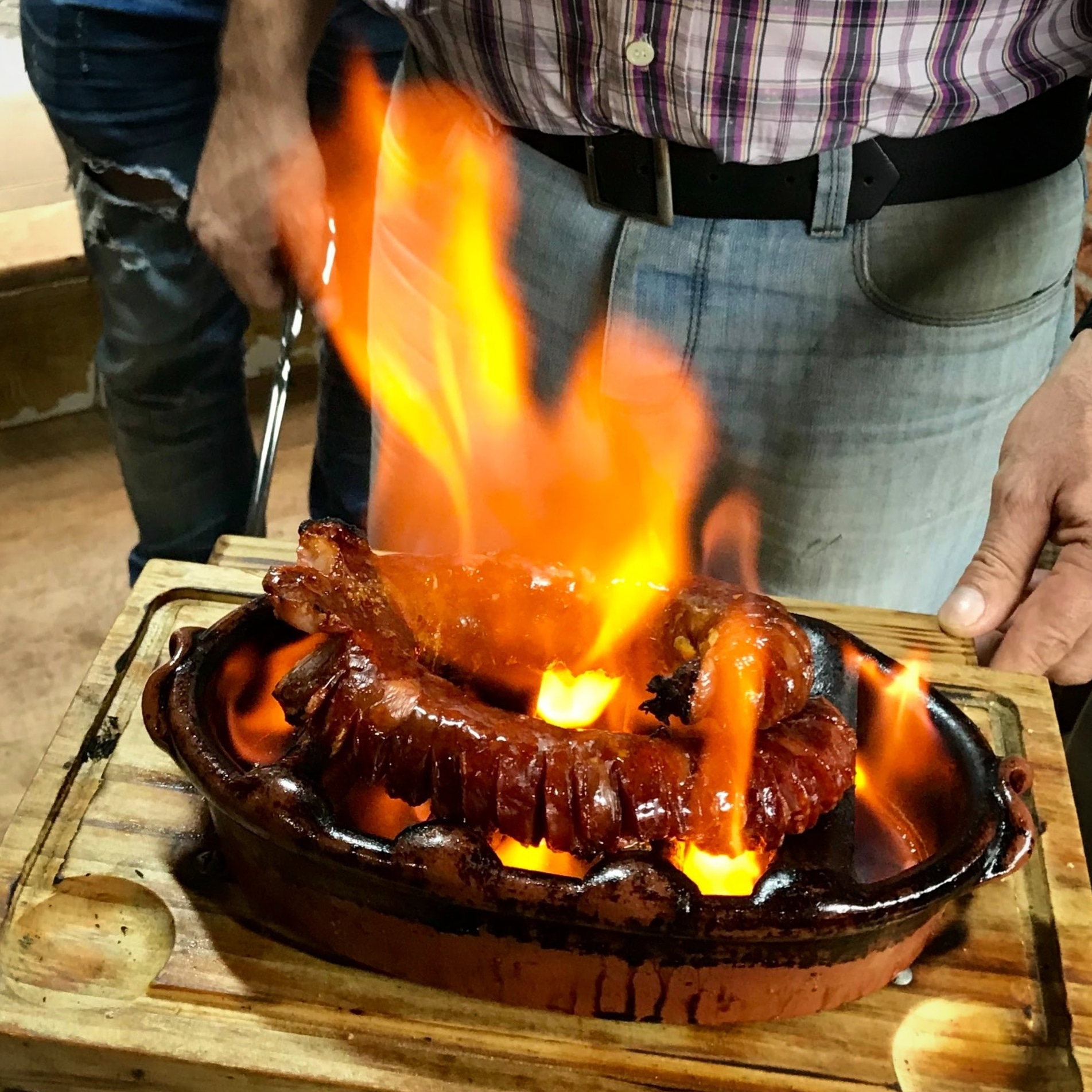
Portuguese Gastronomy
Exploring the Richness of Portuguese Gastronomy
Portugal Gastronomy stands as a testament to its rich history, diverse landscapes, and cultural influences spanning centuries. In this article, we’ll delve into the various categories of Portuguese Gastronomy, its influences, and the renowned tradition of conventual sweets in the country.
Categories of Portuguese Gastronomy
- Seafood: With a coastline that stretches along the Atlantic Ocean, it’s no surprise that seafood features prominently in Portuguese cuisine. From grilled sardines to hearty fish stews like caldeirada, seafood dishes showcase the freshness and abundance of the ocean’s bounty.
- Meat: Portugal boasts a variety of meat-based dishes, often incorporating pork, beef, and poultry. From the succulent roasted suckling pig of Bairrada to the hearty cozido à portuguesa, a traditional meat stew, Portuguese cuisine offers a diverse range of meat-centric delights.
- Bread and Cheese: Bread holds a special place in Portuguese cuisine, with each region boasting its own unique varieties. Coupled with an array of artisanal cheeses, such as queijo da Serra da Estrela and queijo de Azeitão, bread and cheese are staples of Portuguese dining tables.
- Soups and Stews: Soups and stews are integral to Portuguese cuisine, offering comfort and nourishment, especially during colder months. Caldo verde, a hearty soup made with kale, potatoes, and sausage, is perhaps the most iconic example of Portuguese soup.
- Desserts and Pastries: Portuguese desserts are celebrated for their indulgent flavors and exquisite craftsmanship. From the famous pastéis de nata (custard tarts) to the delicate queijadas (cheese pastries), Portuguese sweets delight the palate with their rich heritage and delectable taste.
Influences of Portuguese Gastronomy
 Portuguese gastronomy is a reflection of the country’s historical and cultural influences, which have shaped its culinary identity over centuries. The Age of Discovery, during which Portuguese explorers established trade routes and colonies across the globe, introduced new ingredients and flavors to Portuguese cuisine. Spices from Asia, exotic fruits from Africa, and chili peppers from the Americas found their way into Portuguese kitchens, enriching local dishes with diverse aromas and tastes.
Portuguese gastronomy is a reflection of the country’s historical and cultural influences, which have shaped its culinary identity over centuries. The Age of Discovery, during which Portuguese explorers established trade routes and colonies across the globe, introduced new ingredients and flavors to Portuguese cuisine. Spices from Asia, exotic fruits from Africa, and chili peppers from the Americas found their way into Portuguese kitchens, enriching local dishes with diverse aromas and tastes.
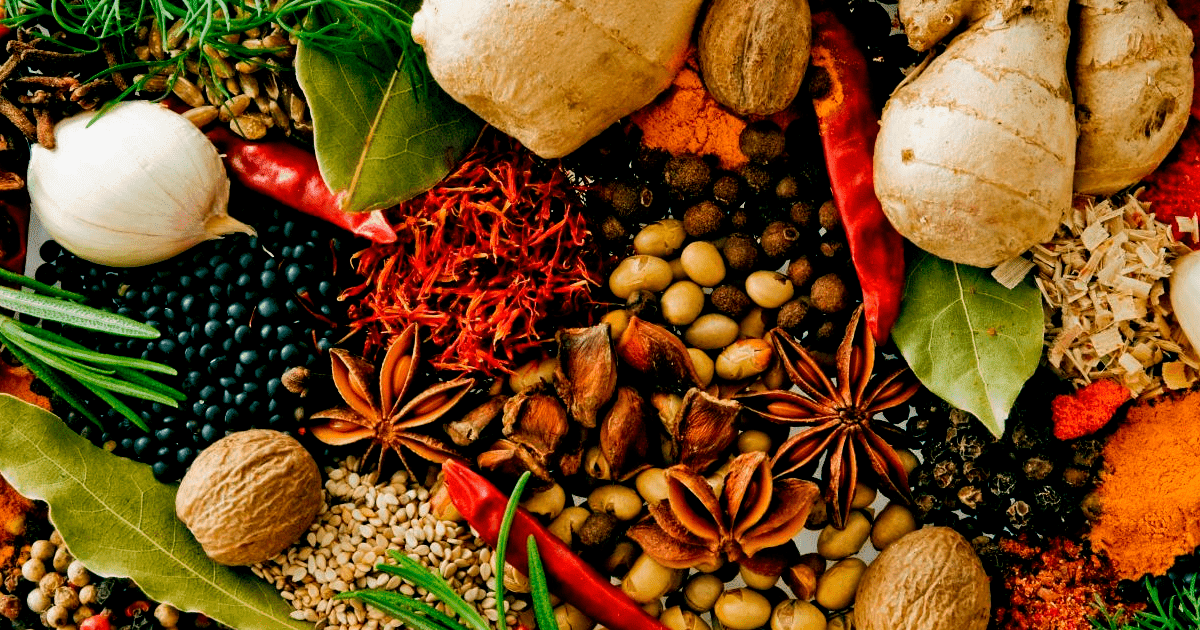
Furthermore, centuries of Moorish rule in the Iberian Peninsula left an indelible mark on Portuguese cuisine, influencing cooking techniques, ingredients, and flavor combinations. The Moors introduced almonds, citrus fruits, and spices such as cinnamon and saffron, which continue to feature prominently in Portuguese sweets and savory dishes alike.
The culinary traditions of former Portuguese colonies, particularly Brazil, Angola, and Mozambique, have also left a lasting impact on Portuguese gastronomy. Ingredients like cassava, palm oil, and coconut, as well as cooking techniques from these regions, have been integrated into Portuguese cuisine, adding depth and complexity to its culinary repertoire.
The Fame of Conventual Sweets in Portugal
Conventual sweets, or doces conventuais, hold a cherished place in Portuguese gastronomy, renowned for their exquisite flavors and intricate craftsmanship. These sweets have their origins in the convents and monasteries of medieval Portugal, where nuns and monks transformed humble ingredients such as eggs, sugar, and almonds into sublime delicacies.
The Tradition and Fame

The tradition of conventual sweets flourished during a time when convents and monasteries played a significant role in Portuguese society, serving as centers of learning, charity, and culinary innovation. The nuns and monks, skilled in the art of confectionery, developed recipes that were closely guarded secrets, passed down through generations within the cloistered walls.
The fame of conventual sweets can be attributed to several factors. Firstly, their historical significance adds to their allure, as they are imbued with centuries of tradition and craftsmanship. Secondly, the use of simple yet high-quality ingredients allows the flavors to shine, resulting in desserts that are both elegant and delicious. Finally, the intricate preparation methods, often requiring meticulous attention to detail, contribute to the mystique surrounding conventual sweets, elevating them to a revered status within Portuguese culinary culture.
Is the Portuguese cuisine considered Mediterranean cuisine?
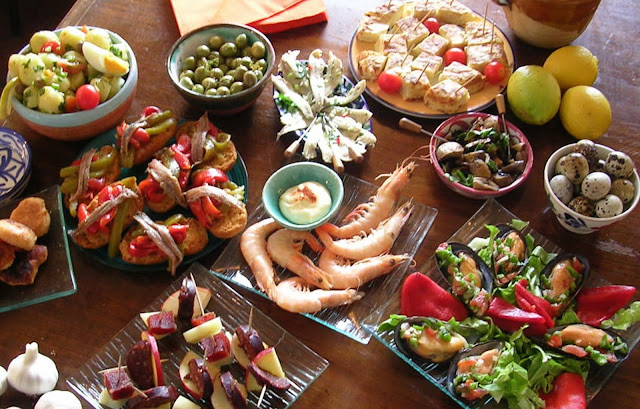
Yes, the Portuguese cuisine is commonly regarded as part of Mediterranean cuisine, although it does have distinct characteristics that differentiate it from other Mediterranean cuisines like Italian or Spanish. The classification of Portuguese cuisine as Mediterranean is based on several shared features with other culinary traditions of the Mediterranean region.
Portugal’s geographical location along the Iberian Peninsula and its extensive coastline along the Atlantic Ocean contribute significantly to its culinary similarities with Mediterranean cuisines. Some of the key features that align Portuguese cuisine with the Mediterranean culinary tradition include:
Use of Olive Oil
Like many other Mediterranean cuisines, Portuguese cuisine relies heavily on olive oil as a primary cooking fat. Olive oil is used for sautéing, frying, dressing salads, and adding flavor to various dishes, contributing to the characteristic Mediterranean taste profile.
Emphasis on Seafood in the Portuguese gastronomy
Portugal’s coastal location ensures abundant access to fresh seafood, which is a cornerstone of Mediterranean diets. Portuguese cuisine features a wide variety of fish and shellfish dishes, prepared in diverse ways, from simple grilling to elaborate stews and casseroles.
Fresh and Seasonal Ingredients
Mediterranean cuisines prioritize the use of fresh, seasonal ingredients, and Portuguese cuisine is no exception. Fresh fruits, vegetables, herbs, and legumes play prominent roles in Portuguese dishes, reflecting the importance of seasonal produce in Mediterranean culinary traditions.
Simplicity and Flavor
Mediterranean cuisines are known for their emphasis on simplicity and the natural flavors of ingredients. Portuguese dishes often showcase the natural flavors of seafood, meats, and vegetables, with minimal seasoning to allow the quality of the ingredients to shine through.
However, it’s important to note that Portuguese cuisine also exhibits unique characteristics that distinguish it from other Mediterranean cuisines. The influence of Portugal’s colonial history, including flavors and ingredients from its former colonies in Africa, Asia, and the Americas, adds complexity and diversity to Portuguese gastronomy.
In summary, while Portuguese cuisine shares many similarities with Mediterranean culinary traditions, it also possesses distinct elements that reflect the country’s unique history, geography, and cultural heritage.
The very famous Portuguese Codfish in the local gastronomy
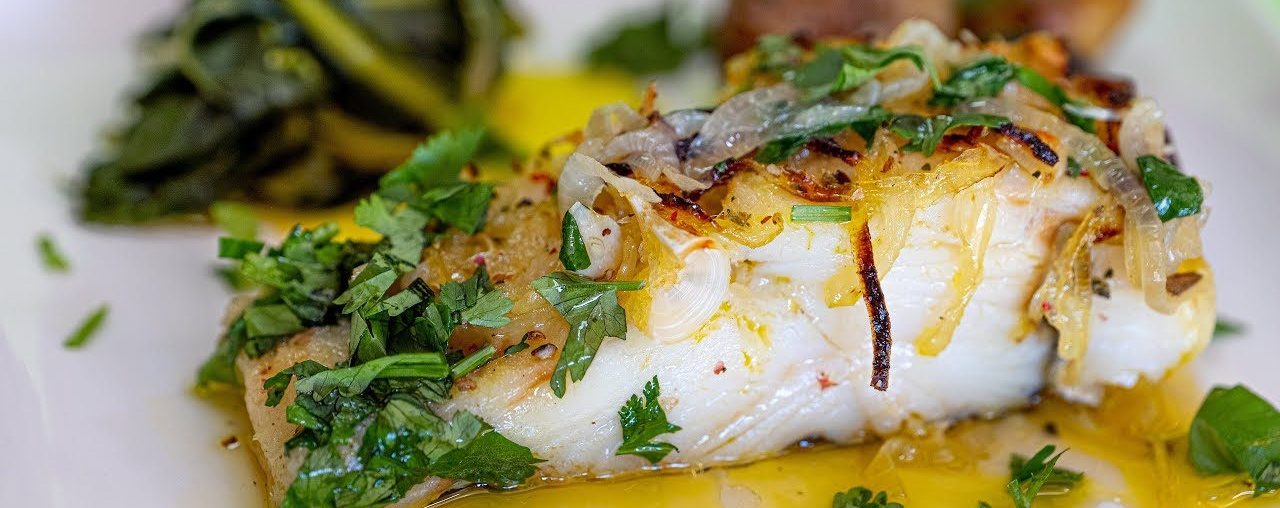
The presence of codfish, or bacalhau in Portuguese, in the country’s gastronomy has a fascinating historical origin. The introduction of codfish into Portuguese cuisine can be traced back to the Age of Exploration, particularly during the 15th and 16th centuries, when Portuguese explorers were venturing into new territories and establishing trade routes around the world.
During their maritime expeditions, Portuguese sailors encountered the rich fishing grounds of the North Atlantic, particularly off the coasts of Norway, Iceland, and Greenland. These regions were teeming with codfish, a species that was abundant and easily accessible in the cold, nutrient-rich waters.
The discovery of these vast codfish stocks was a significant boon for Portugal, as it provided a reliable and long-lasting source of protein that could be preserved for extended periods without refrigeration. This was especially crucial for sailors embarking on long voyages across the oceans, as fresh food would quickly spoil onboard ships.
The techniques of salting and drying codfish and how it is important for the Portuguese Gastronomy
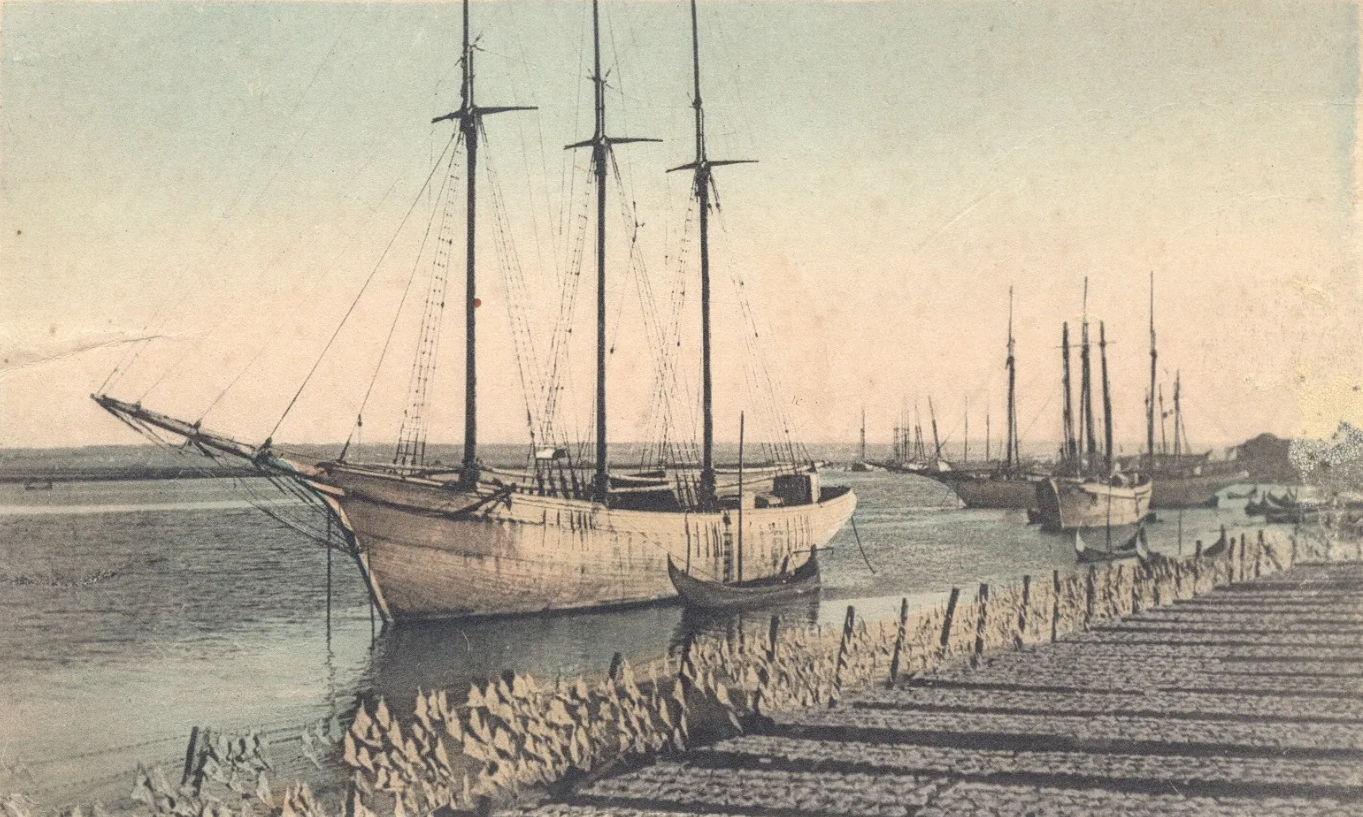
Portuguese fishermen and sailors soon learned the techniques of salting and drying codfish from the Norse fishermen who had been harvesting and preserving it for centuries. The process involved salting the fish to remove moisture, followed by drying it in the sun and wind, which allowed the cod to be preserved for months or even years.
As Portugal’s maritime empire expanded, so too did the consumption of bacalhau within the country. Codfish became a staple food in Portuguese households, particularly among the working-class population and in regions far from the coast where fresh fish was scarce.
Over time, bacalhau became deeply ingrained in Portuguese culinary culture, giving rise to a plethora of traditional dishes that remain popular to this day. From bacalhau à Brás (a shredded cod dish with eggs and potatoes) to bacalhau com natas (codfish with cream), Portuguese cuisine boasts a wide variety of bacalhau recipes that showcase the versatility and adaptability of this iconic ingredient.
The appearance of codfish in Portuguese gastronomy is intimately linked to the country’s seafaring history and maritime exploration during the Age of Discovery. The discovery of abundant codfish stocks in the North Atlantic provided Portugal with a valuable source of protein that profoundly influenced its culinary traditions and contributed to the emergence of iconic dishes that continue to define Portuguese cuisine.
What about the Wine in Portugal? Is it part of the Portuguese Gastronomy?
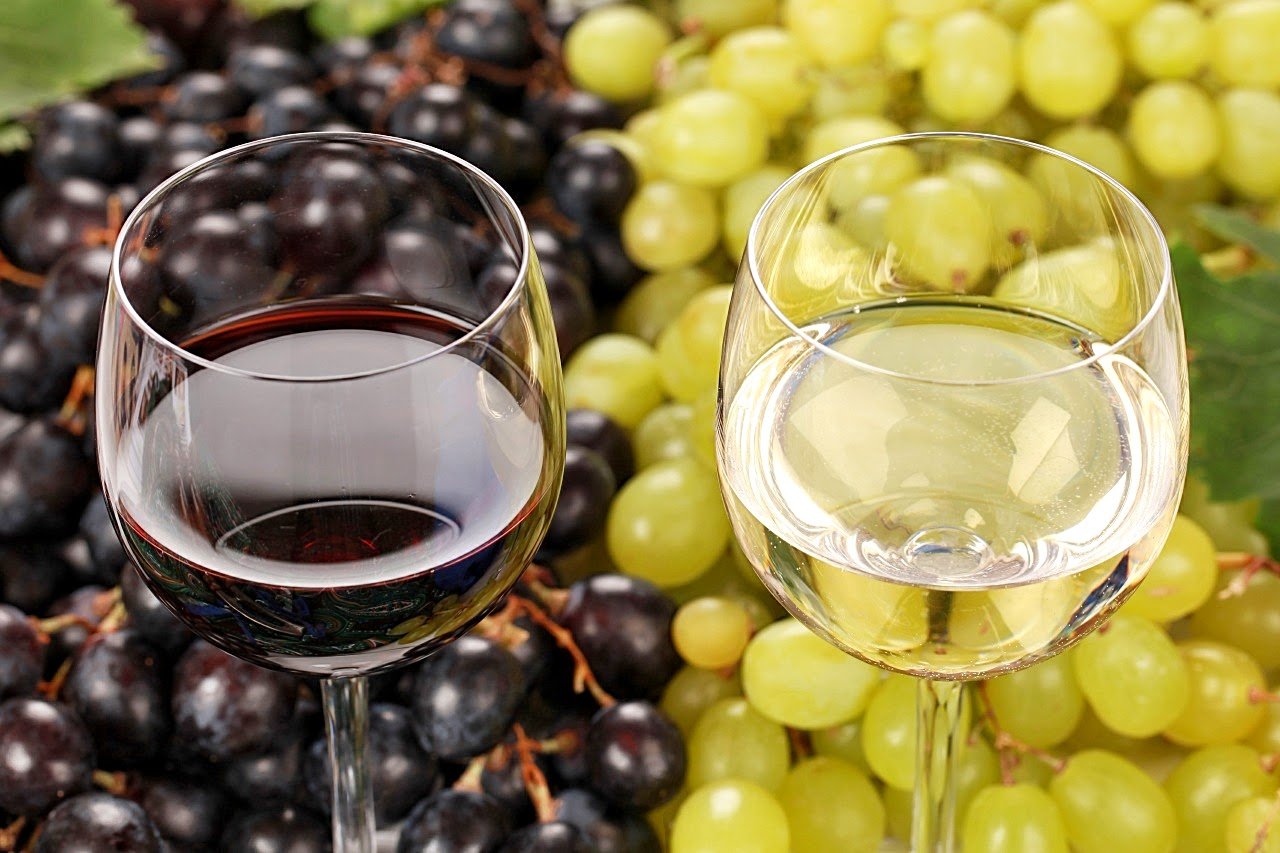
Wine holds a significant place in Portuguese gastronomy and culture, with Portugal being one of the oldest wine-producing regions in the world. The history of winemaking in Portugal dates back thousands of years, with evidence of vine cultivation and wine production found as early as the time of the Roman Empire.
Portugal’s diverse climate, geography, and soil types contribute to the country’s rich winemaking heritage, allowing for the cultivation of a wide variety of grape varieties and the production of an array of wine styles. From the lush green valleys of the Minho region in the north to the sun-drenched vineyards of the Alentejo in the south, Portugal’s wine regions offer a tapestry of terroirs and microclimates that shape the character and flavor profile of its wines.
Some of the most renowned Portuguese wine regions include:
- Douro Valley: Known for its steep terraced vineyards along the Douro River, the Douro Valley is the oldest demarcated wine region in the world and is famous for producing Port wine, a fortified wine that has been a symbol of Portugal’s winemaking prowess for centuries.
- Alentejo: Located in the south-central part of Portugal, the Alentejo region is characterized by its vast plains and hot, dry climate. Alentejo wines are known for their robust character and intense flavors, with red varieties such as Trincadeira and Aragonez being particularly popular.
- Dão: Situated in the hilly interior of central Portugal, the Dão region is renowned for its elegant and complex red wines, which are often made from indigenous grape varieties such as Touriga Nacional and Tinta Roriz. Dão wines are prized for their balance, structure, and aging potential.
- Vinho Verde: Translating to “green wine,” Vinho Verde is a unique style of wine produced in the Minho region of northern Portugal. Contrary to its name, Vinho Verde can be white, red, or rosé and is known for its light, fresh, and slightly effervescent character, making it an ideal accompaniment to Portugal’s seafood cuisine.
In addition to these main wine regions, Portugal is also home to lesser-known but equally fascinating wine-producing areas, such as the Azores and Madeira archipelagos, where unique terroirs and grape varieties yield distinctive wines.
The Wine Role
Wine plays a central role in Portuguese culinary traditions, often enjoyed alongside meals as an accompaniment to food or as an aperitif before dining. Whether sipping a glass of Port with a slice of queijo da Serra or enjoying a crisp Vinho Verde with grilled fish, wine enhances the dining experience and reflects the rich cultural heritage of Portugal.
The differences between regions in the Portuguese Gastronomy
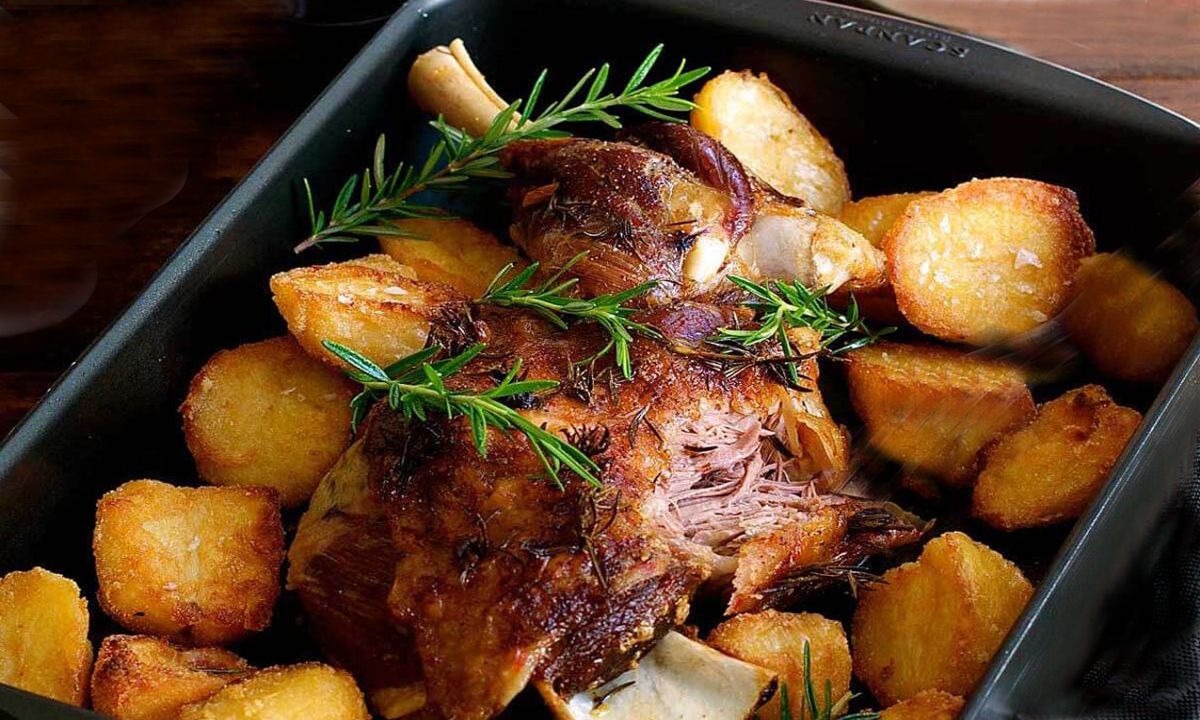 Portugal is a country of diverse landscapes, climates, and cultural influences, and these factors contribute to a rich tapestry of regional cuisines. Each region of Portugal has its own culinary traditions, ingredients, and specialties, reflecting local customs, history, and geography. Here are some of the key differences in cuisine between the regions of Portugal:
Portugal is a country of diverse landscapes, climates, and cultural influences, and these factors contribute to a rich tapestry of regional cuisines. Each region of Portugal has its own culinary traditions, ingredients, and specialties, reflecting local customs, history, and geography. Here are some of the key differences in cuisine between the regions of Portugal:
The Northern Portugal (Minho, Douro, Trás-os-Montes)
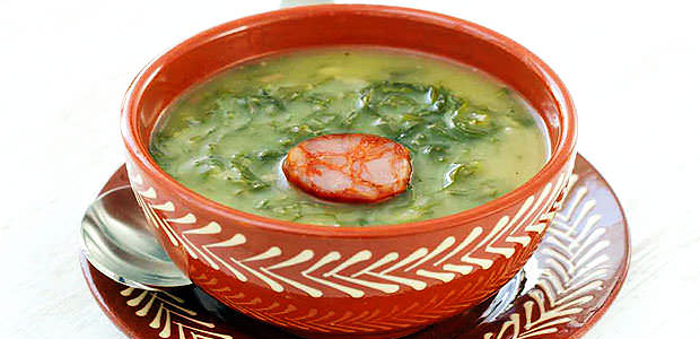
- Known for hearty and rustic dishes, Northern Portuguese cuisine features an abundance of freshwater fish, pork and game meats.
- Caldo verde, a traditional kale soup, is a popular dish in this region, as well as roast meats like cabrito assado (roast kid goat) and cozido à portuguesa (meat and vegetable stew).
- The Minho region is famous for its Vinho Verde wine, while the Douro Valley produces renowned Port wine.
The Central Portugal (Beiras, Estremadura)
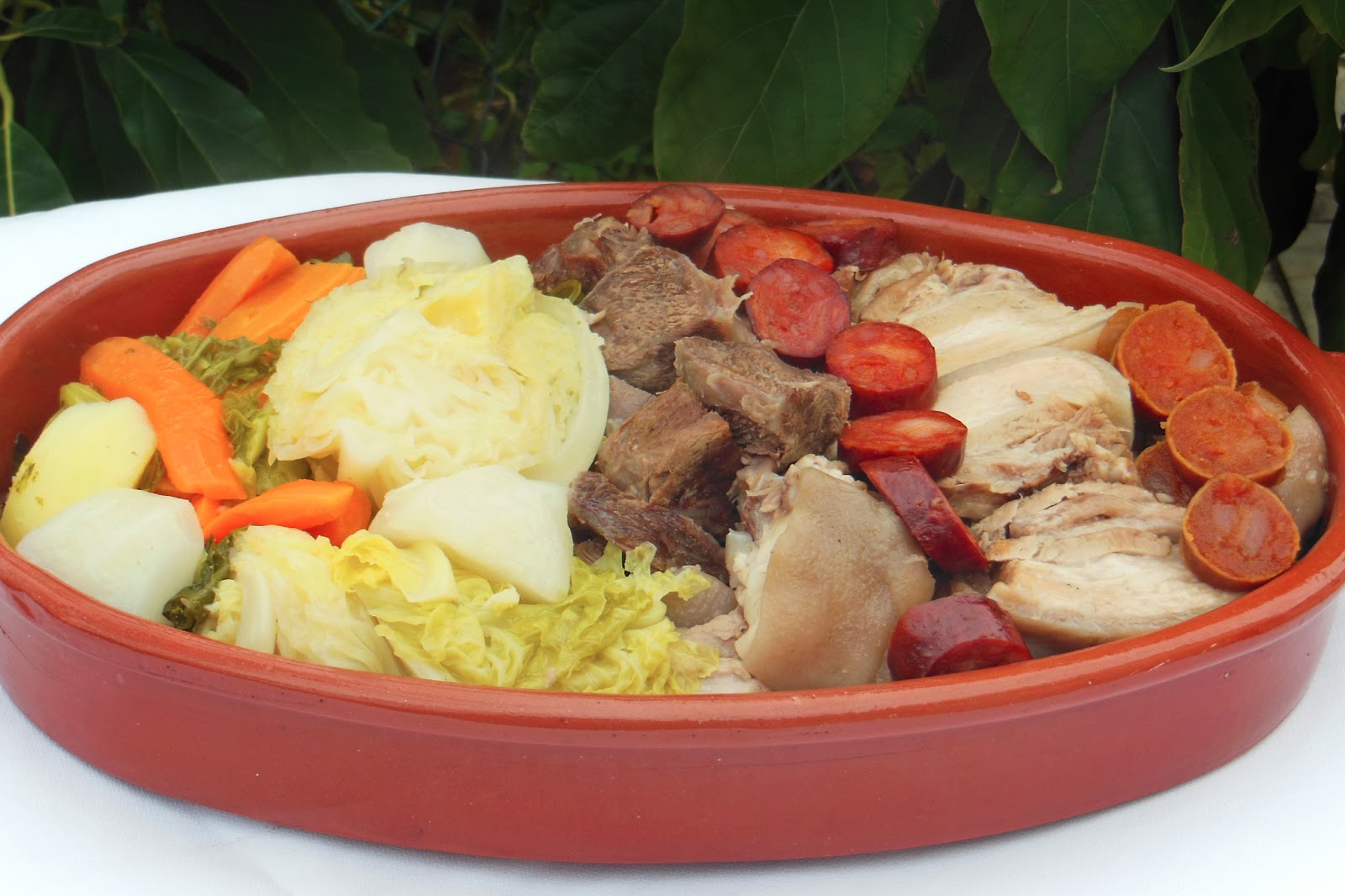
- The central region of Portugal is characterized by its diverse terrain, ranging from mountains to coastal plains, which influences its cuisine.
- Cozido à portuguesa is a staple dish in central Portugal, along with regional specialties like leitão da Bairrada (suckling pig) from the Bairrada region.
- Coastal areas, such as the Estremadura region, are known for their seafood dishes, including grilled sardines and seafood rice.
The Lisbon and The Tagus Valley

- Lisbon, the capital city, and its surrounding areas offer a diverse culinary landscape influenced by both traditional Portuguese cuisine and international flavors.
- Bacalhau à Brás (shredded cod with eggs and potatoes) and pastéis de nata (custard tarts) are iconic dishes associated with Lisbon.
- The Tagus Valley region is known for its agriculture, producing fruits, vegetables, and wines such as the Tejo region’s robust red wines.
The Alentejo
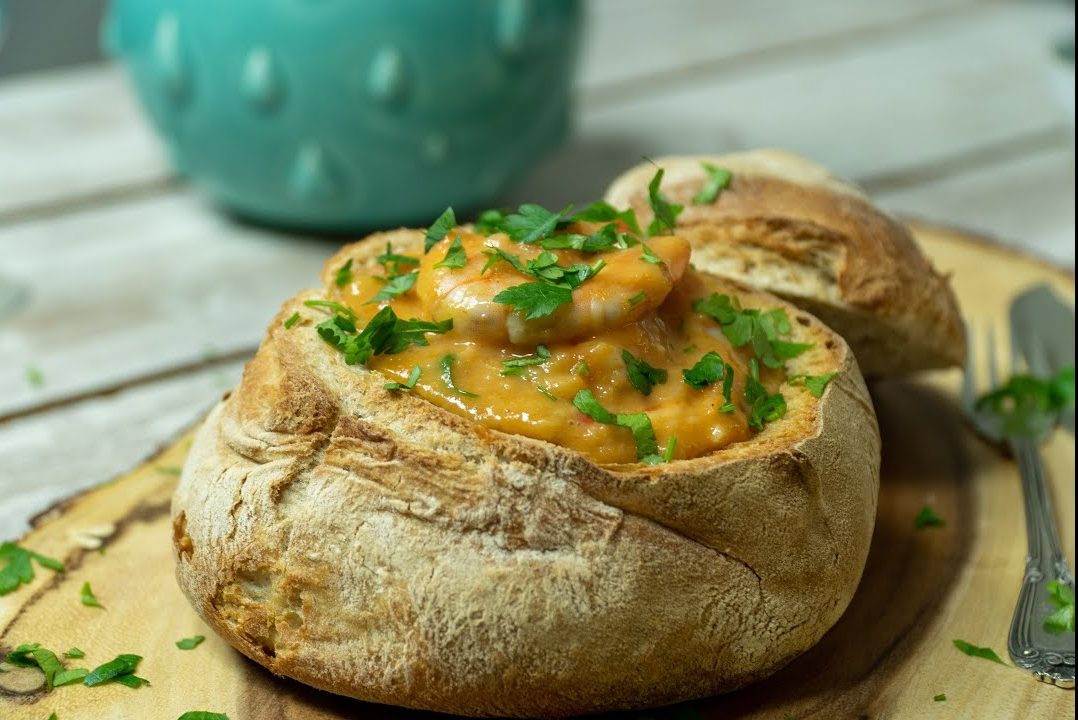
- The Alentejo region in southern Portugal is characterized by its vast plains, olive groves, and cork oak forests, which influence its cuisine.
- Alentejo cuisine features hearty dishes such as açorda (bread soup), migas (bread-based dishes), and carne de porco à Alentejana (pork and clam stew).
- The region is also known for its artisanal cheeses, cured meats, and olive oil.
The Algarve
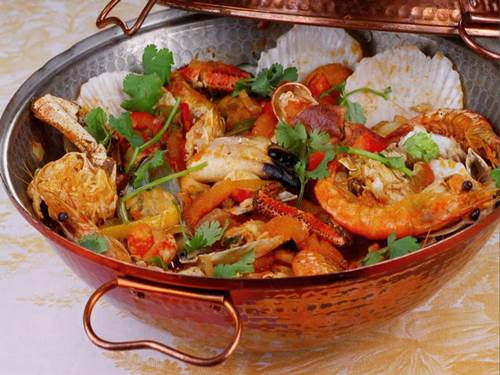
- The Algarve region, located in the southernmost part of Portugal, boasts a cuisine centered around fresh seafood and Mediterranean flavors.
- Grilled fish, seafood cataplanas (stews), and arroz de marisco (seafood rice) are popular dishes in the Algarve.
- The region’s warm climate and fertile soil also produce a variety of fruits, including oranges, figs, and almonds.
These are just a few examples of the culinary diversity found within Portugal’s regions. Each area offers a unique gastronomic experience, showcasing the country’s rich culinary heritage and the influence of its landscapes, history, and cultural traditions.
 In conclusion, Portuguese gastronomy is a tapestry woven from a rich tapestry of historical, cultural, and geographical influences. From the bounty of the sea to the warmth of traditional sweets, Portuguese cuisine captivates the senses and delights the palate, inviting diners on a journey of discovery through centuries of culinary tradition.
In conclusion, Portuguese gastronomy is a tapestry woven from a rich tapestry of historical, cultural, and geographical influences. From the bounty of the sea to the warmth of traditional sweets, Portuguese cuisine captivates the senses and delights the palate, inviting diners on a journey of discovery through centuries of culinary tradition.





